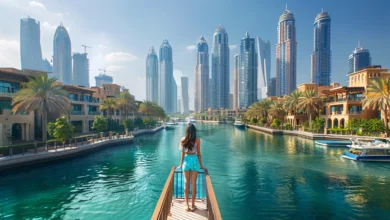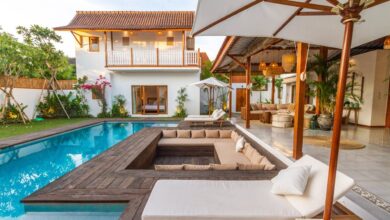Do Kota Discover Rajasthan’s Underrated Royal City

Are you already tired of the crowds that overtake Jaipur or of the over-saturated Instagram filters of Udaipur? Then it is time to do Kota. Kota is the city that almost always lies quietly on the banks of the Chambal River. Yet when it whispers for attention it tells tales of Rajput kings British trade routes, and modern-day paradoxes. If you think Kota is for budding engineers think again.
The guide will take you through the sounds and sights of the city: the charms balancing heritage, art, and architecture with everyday street life gone wild. If you’re a culture nomad or are just going for the first time to Rajasthan, doing Kota just might be your best travel decision for this year!
Table of contents
What Really Makes Kota Different?
Rajasthan is royalty. But Kota? Kota is legacy. It is not trying to be the latest big thing-it was that, centuries ago. Today, it stands on this thin line between ancient regal heritage and mercantile present in coaching centers.
Wherein most Rajasthani cities sell romance, reality-which is rather refreshing.
- Kota Garh (City Palace): A living museum of Mughal-Rajput architecture.
- Seven Wonders Park: Where replicas of global icons meet Indian ambition.
- Chambal Garden: Quiet walks with a side of crocodiles (yes, really).
It provides a lot to unpack if only you look beyond the haze of student hostels and the honks of the city.
Best Places to Visit in Kota
Let’s draw out an excursion that combines sightseeing with soul-searching.
1. Kota Garh Palace
Kota Garh, a less-advertised palace since the 17th century, has been standing tall ever since. It houses the Rao Madho Singh Museum, where you will find miniature paintings, royal costumes, and old weaponry that once belonged to the kings of Kota. The museum isn’t grand in any way. Yet, grand in intensity. Each piece shouldered weight, history, and that forever smell of nostalgia.
2. Jagmandir Palace
Floating on Kishore Sagar Lake, the sandstone palace is picturesque, especially in the evening. Built in 1740, it is a good place for self-reflection or for taking a hundred selfies. Locals hang around, children play while couples share pin-drop silence. Among the few slow moments this is one.
3. Chambal River Safari
You’ve heard of crocodile tears but how about crocodile stares? The Chambal River Safari is not for faint hearts. This protected stretch houses gharials, marsh crocodiles, and migratory birds. The boats paddle gently, and the guide’s whispers make you feel as if you’re on the Discovery Channel.
Where Culture and Craft Collide
This is the bullet-point section you have been waiting for snappy, clear, and wildly useful:
- Kota Doria Sarees: Cotton and silk blend with delicate patterns, hand-woven for centuries.
- Miniature Painting Schools: Dive into Bundi-style art workshops which still work with natural pigments.
- Kaithoon Village: Home of the original weavers of Kota Doria. Meeting artisans, seeing the looms, and buying direct.
- Chhattar Bilas Garden: Not your average park. Imagine royal tombs surrounded by flowers.
- Local Food Scene: Try dal baati churma, laal maas, and those kachoris so spicy, they work as cold medicine.
This is not Jaipur glam this is raw real Rajasthan!
Beyond the Brochures: Local Life in Kota
Kota is also India’s coaching capital. A city of dreams, pressure and neon boards touting JEE/NEET miracles. The juxtaposition of royal monuments and modern academic grind is well worth observing.
Walk around Talwandi and you will see a sea of students. Some starry-eyed. Some dead tired. For travelers, this offers a new-age Indian perspective where ambition clashes with tradition.
And cafes, and art collectives and hidden bookstores could tell you stories that textbooks never do.
When to Visit Kota (And Why Timing Matters)
Kota is not indifferent to weather however. You can adopt the way between October and March. The view is clear, the breeze from the Chambal cool, and being here is more of a privilege than a punishment.
Avoid May–June, unless you wish to experience the full vengeance of Rajasthan.
Reach and Getting Around
- Air: Nearest airport in Jaipur (around 245 km). From there, either take a train or book a taxi.
- Train: Kota Junction is well connected. Daily trains flow in from New Delhi, Mumbai and Ahmedabad.
- Road: Regular buses and cabs are available from all major cities in Rajasthan and Madhya Pradesh.
Auto-rickshaws dominate the streets inside Kota. For added flair, a cycle-rickshaw will slow down to accommodate and provide a unique sightseeing experience for lesser distances.
Practical Tips for First-Time Visitors
- Dress Modestly: Kota is not a touristy place like Jaipur; blend in respectfully.
- Cash is King: UPI works, but local markets are still cash-and-charm-based.
- Stay Central: Try to pick a place to stay around Gumanpura or Talwandi for easy access.
- Hire Local Guides: Especially for the river safari and palace walks.
- Respect Local Pace: Kota is in no hurry, and neither should you be.
Conclusion
So why do you do Kota? Because it is real. It is regal. And it does not pretend to be what it is not. It offers one unique kind of getaway with stories rather than just selfies.
You are not just going to collect souvenirs from Kota. You will collect memories of Rajasthan’s contradictions: of kings long gone and of ambitious engineers to be; fading crafts and rising aspirations.
Go ahead. You will never regret it.
FAQs
1. What is Kota famous for?
Kota is known for its royal heritage, Doria sarees, and being India’s top coaching hub for engineering and medical entrance exams.
2. Is Kota safe for solo travelers?
Yes, it is generally safe. Stick to well-lit areas at night, use trusted local transport, and follow standard travel precautions.
3. What is the best time to visit Kota?
October to March offers pleasant weather, making it the ideal time to explore the city comfortably.
4. Can I explore Kota in one day?
You can see the main attractions in a day, but spending 2–3 days gives you a fuller experience of Kota’s culture and history.





